- Learning time
- 20 minutes
- First play time
- 45 minutes
Tea for 2
Designed by: Cédrick Chaboussit
Inspired by and thematically based on Alice in Wonderland, the game of Tea for 2 is about scoring points. But how? Let us count the ways…
As the name suggests, this is a two-player game. To set up, the scoreboard is placed centrally with the objective cards placed beneath it: Alice (8), King (7), Snail (6), Knave (5), Executioner (4). For the purposes of the game, you’re mainly focused on the numbers. Above each pile of objective cards you randomly place a scoring token, the point of which will become (hopefully) clear very soon. One player starts with a single tart token and the flamingo, the other has three tart tokens. If it sounds like you’re fallen down a rabbit hole already, don’t worry.
Each of you get a deck of cards numbered one to nine and place them face-down, shuffled into a single deck. In each turn, players both flip their top card at the same time, and the higher card wins (in the case of a tie, the player with the flamingo wins). As the winner, you’ve a choice. You can either use the difference between the two numbers to purchase an objective card from the display (tart tokens can also be spent this way) OR you can use the power on your card instead. The powers are pretty simple: get tart tokens, grab the flamingo, get hourglass tokens (more on those soon) or ‘destroy’ cards to claim any points on them (cards have between zero and two points on them, signified by gold stars)
After you’ve bought or used a power, you can optionally spend hourglass tokens to push the time forward on the clock: doing so simply brings the reward of wherever the hand stops: get some points, claim the flamingo, destroy a card and so on. Whenever your deck runs out, you add in a (fairly useless) rabbit card (1) and shuffle everything into a draw deck again.
So that’s the turn by turn, in essence: both of you flip, and the winner gets to buy a new card for their deck or exercise the power on the card they flipped. But what is the ultimate goal? That’s where we look again to the scoring tokens, because as well as scoring here and there during play, you’ll also gather points at the end of the game – which is either when the rabbit cards run out or four of the six objective card piles have been claimed. If a scoring token has no cards left beneath it, then it’s scored. The tokens might be for most cards in deck, most destroyed cards, points for hourglass tokens or so on. How they work is straightforward. Trickier to judge is how they work for you: triggering one scoring token often means removing cards from beneath another in order to compete for it, and it’s that logical flip-floppery at the heart of Tea for 2 that makes it both slightly mad, and strangely compelling!
The guru's verdict
-
Take That!
Take That!
Most of the crestfallen sensations come from the card-flipping, where you can feel like you've no control over events. Stealing the flamingo from each other adds a side-order of spiciness.
-
Fidget Factor!
Fidget Factor!
Almost non-existent. Waiting for the other player to choose between buy-or-power is normally a pretty short wait.
-
Brain Burn!
Brain Burn!
The genius in Tea for 2 is how you're trying to shape a deck whilst hitting targets. The first play might feel completely random, but repeat visits allow modicums of control to swim into focus - not total control by any means, but it's less a game of chance than it first appears.
-
Again Again!
Again Again!
Score tokens are randomized, and the player decks are obviously unpredictable. We've found different games play out in different ways, with someone scoring in-game shooting them up the track during one play and the opponent scoring all the end-game objectives to catch them up. Then in other games there's a tighter contest throughout.

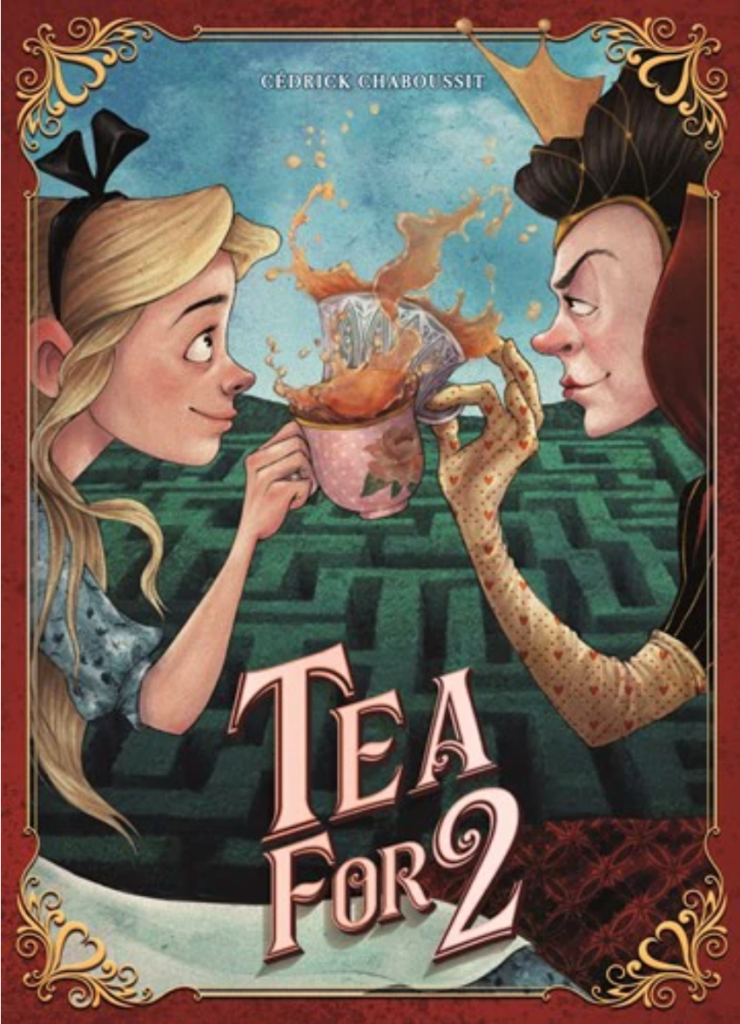
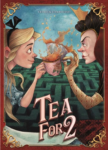
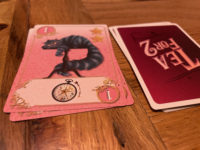

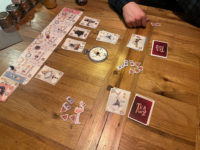



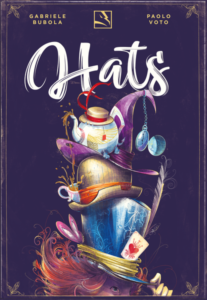


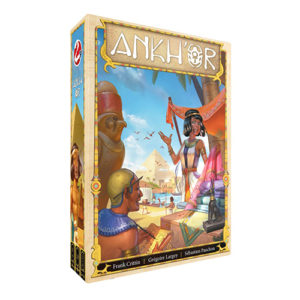

Sam says
It's not the most instantly accessible game, with its multiple currencies of cards, tarts, hourglasses, superpowers and bonkers scoring system. But sticking with it rewards: unlike simpler games (and Tea for 2 isn't that complex) the skewy, weird back-to-front-ness of it all rewards multiple plays. Whilst you can be on the end of some real pummellings when card after card seems to be weaker than your opponent's, the game does seem to balance out and swing back your way. There's a swirling chaos to it you're trying to wrestle in your favour, and as mentioned it's never quite in your grasp; but you do have some agency, and this tangible sense of being sometimes-in-control, sometimes-not is what makes Tea for 2 a quiet delight. The flamingo is crucial though - not only does it decide ties on card v card in favour of the owner, it does the same for token scoring at the end of the game. Great fun.